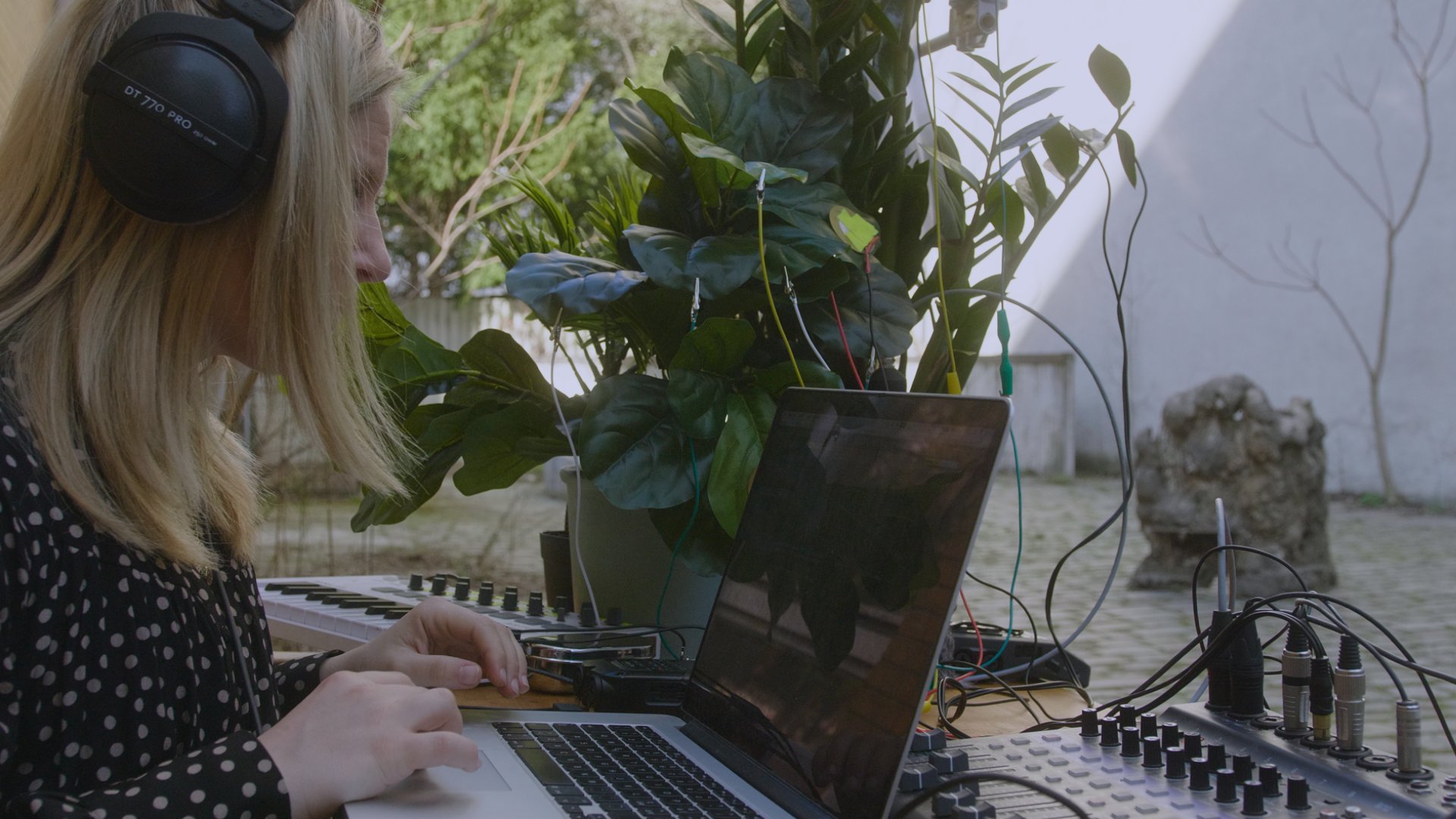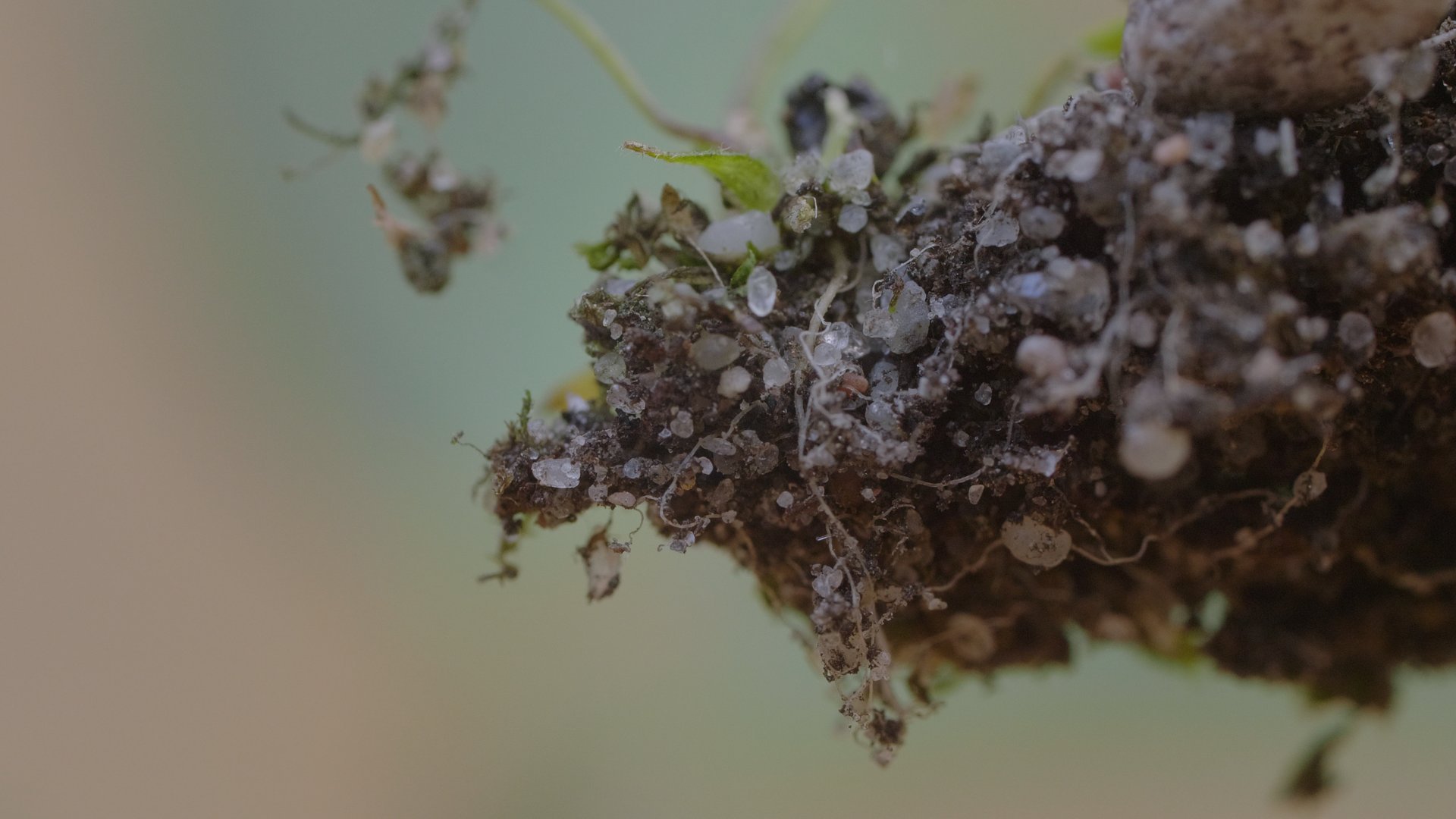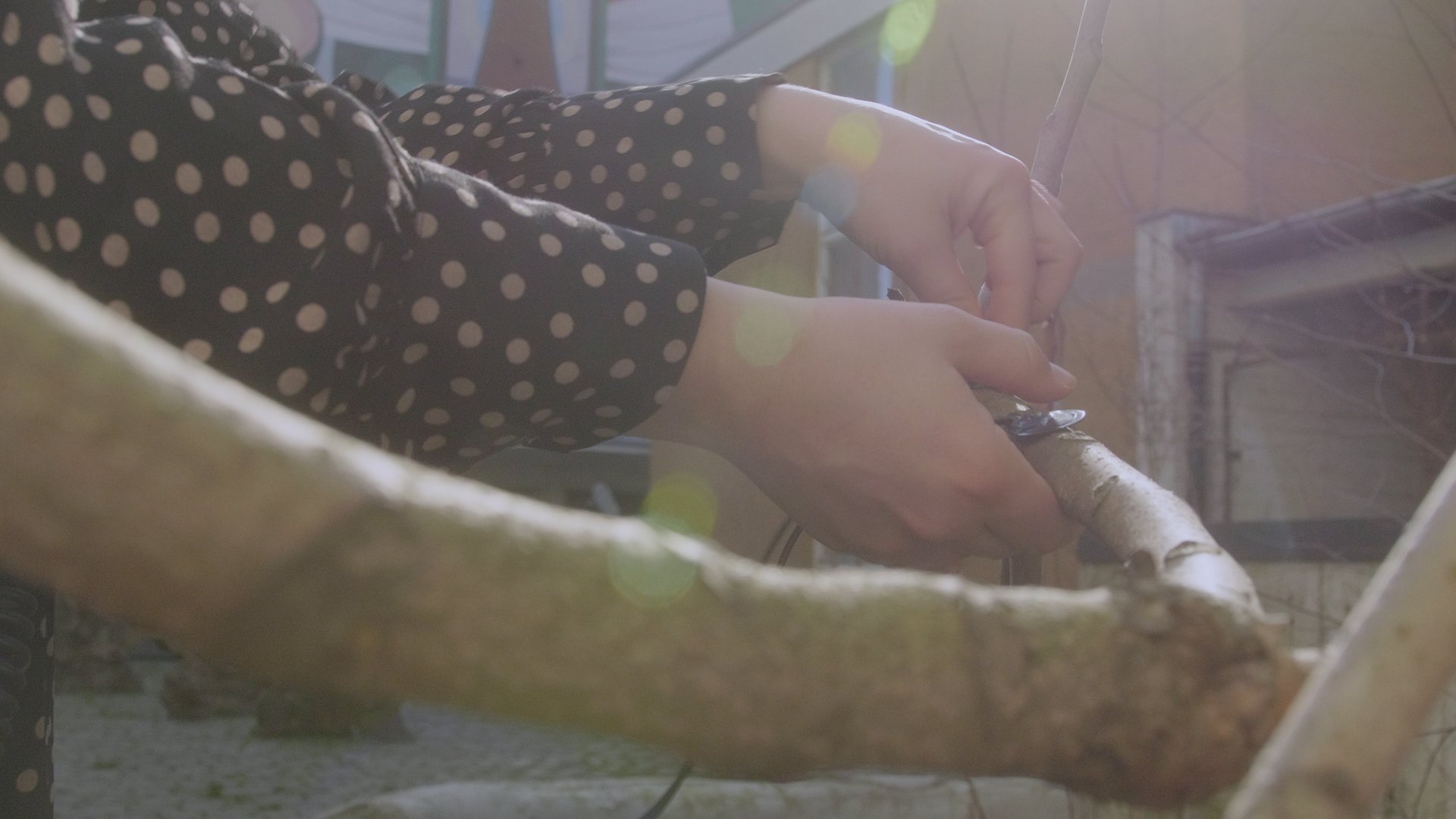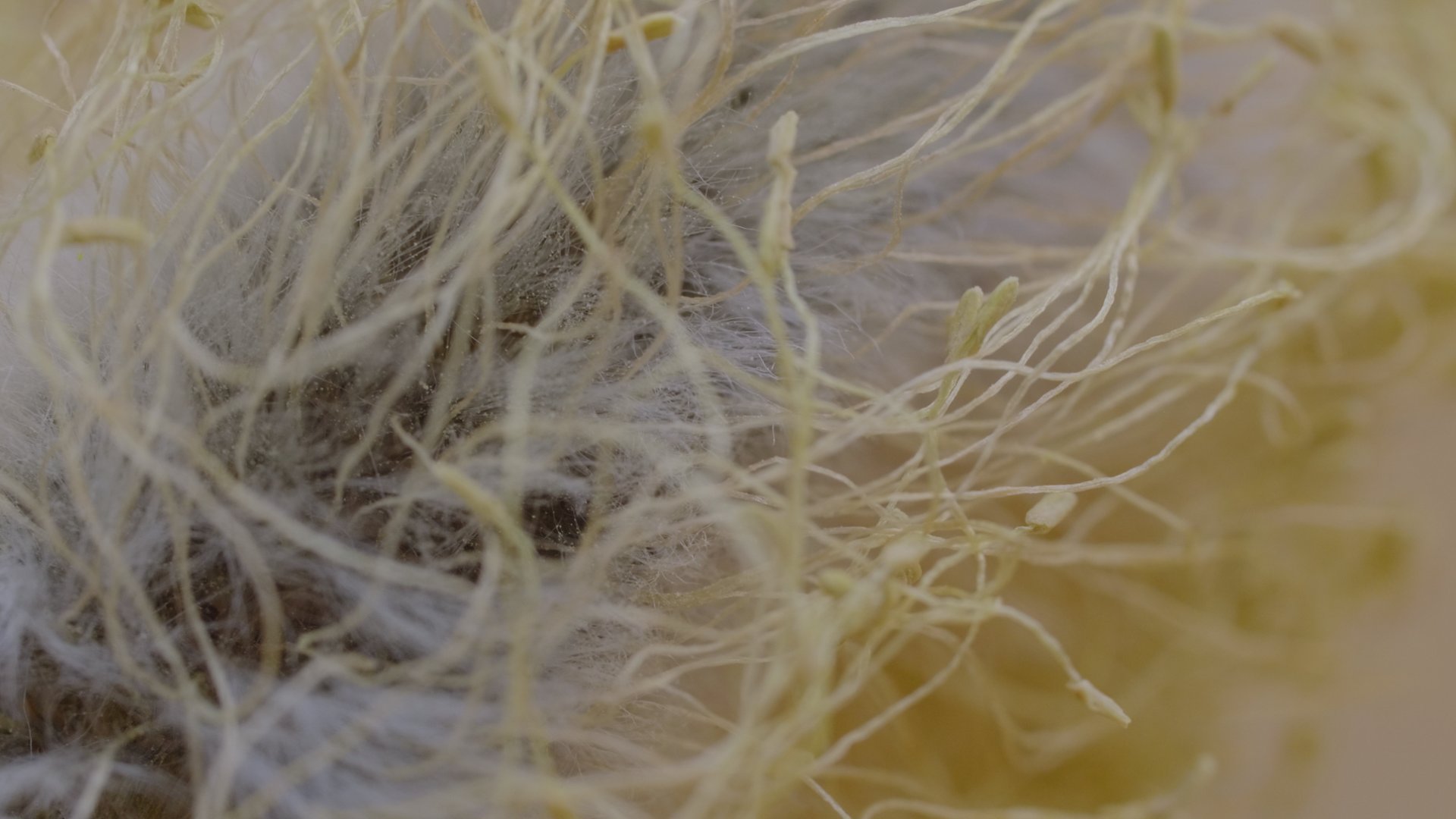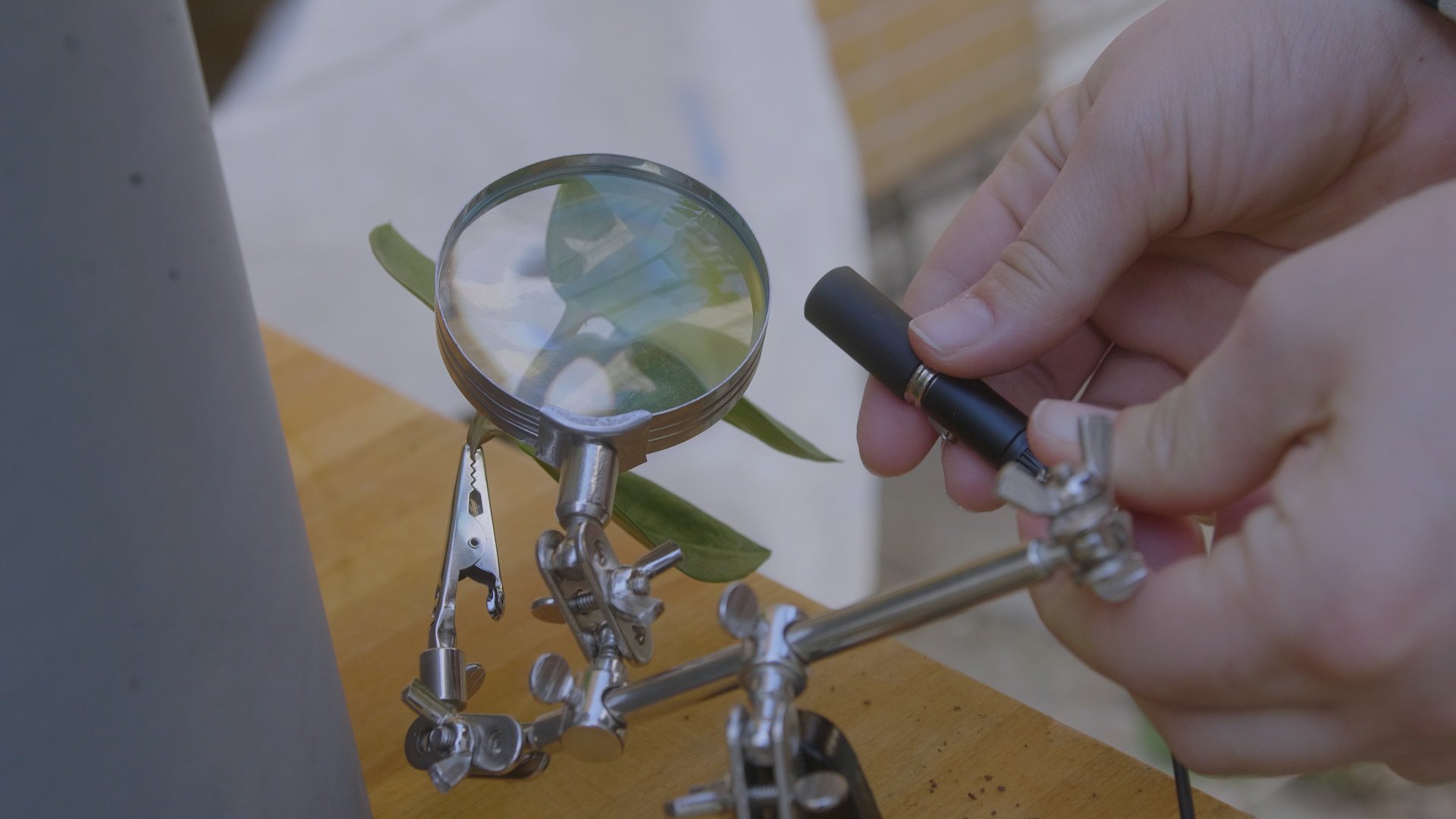SEEDLINGS WITH SIBLINGS
HAUNT - FRONTVIEWS, BERLIN
20 May - 30 July 2021
With:
Roberta Busechian and
Betty Böhm, Maria Nitulescu, Francis Sosta.
Curator: Ece Pazarbaşı
In these times when we are yearning for and also questioning our interpersonal connectivity, the Seedlings with Siblings Public Program revisits the topic of social silver lining through the networks of plants that have surged to takeover HAUNT’s concrete, asphalt and cobblestoned backyard. The idea comes from a mere curiosity, rather from a childlike eagerness to know: What would we see underneath if we were to take an x-ray of these hard surfaces that structured this back yard? Knowing the interconnectedness of trees through mycelia, how would the network of these wild plants look like? How would these images in our imagination would reflect to our own current realities at this very moment?
Through workshops on sonic arts and music, we are looking at an urban surface at the yard of FV to see the unseen, to hear the unheard and to perceive the interconnectedness allover again with fresh eyes, under the different conditions of today. In this garden that is taken over by the ruthless power of nature with small and tiny plants, we are learning from them and creating new networks.
With a microcosmic attitude, we are getting familiar with every tree, bush, moss and weed in this “hidden”garden of plenty. And with a meticulous attention to the detail, collaboratively, we will discover each plant at this garden. To honour the bounty, we will be creating a visual and sonorous inventory and devote each week of workshops, performances and talks to everyone one of them.
SEEDLINGS WITH SIBLINGS talk series:
The Inhabitants of the Abandoned - Talk by Ali M. Demirel
2 July 2021, 7 pm
Using his video trilogy ‘Post Apocalyptic Utopias on Architecture’ as a guide, Demirel will tackle with the instances of plants taking over urban structures. In his work ‘Post Apocalyptic Utopias on Architecture,’ Demirel observes abandoned architectural structures to phantasise about a post-apocalyptic future with no human survivor. How do structures live without humans they’re designed for and by? The work is an artistic take on the beauty of an objectively dystopian scenario. The trilogy consists of ‘The Pier’ (2015, shot at the Scheveningen Pier, DenHaag), The Pit (2017, shot at a cistern in Bodrum) and The Plan (2018, shot at The Packard Plant, Detroit).
2. Vogelsang - Talk/ Performance by Peter Cusack
3 July 2021, 7 pm
After Ali M. Demirel’s visual perspective on the plants taking over abandoned sites, this talk/performance will present Cusack’s the material collected as stories, sounds, images and words in abandoned Vogelsang. Vogelsang is a exSoviet military base 60km north of Berlin that once housed nuclear weapons. In 1994, three years after the collapse of the Soviet Union, it was abandoned and left to decay, hidden in the forest. Today, the area is a nature reserve, but ruins remain. But that is the surface. Unseen, above, below, everywhere, older ecologies are at work. Ants, worms, fungi, nematodes, mosses, bacteria, seeds, roots, saplings, trees, winds and water are constantly active as, for the moment, the forest reasserts its dominance.
3. What would happen if nature were considered a nation? - Talk by Mario Asef
9 July 2021, 7 pm
Mario Asef will be talk about his project Kemmuna Nation (2018), where he has posed the question, what would happen if nature were considered a nation.
In line with the constitutions of the Republic of Ecuador and Bolivia that recognize Pachamama (Mother Earth) as a legal entity with its own rights and responsibilities relative to the state, Kemmuna Nation expounds on the concept of a non-human nation in which interactions between nature and human beings are coordinated. If nature were to decide on mankind's place on the planet, the results for humanity would likely be devastating. Kemmuna Nation makes clear the need to redefine our relationship with nature for the sake of our existence.
4. Woods and Words - Artist Talk by Theresa Schubert
16 July, 2021 7 pm
With her transdisciplinary works, artist Theresa Schubert manages to make the fine connective tissue between human / nature on the one hand and science / technology on the other visible and, above all, tangible. Often, organic materials such as slime moulds, fungi or bacteria are the starting point for an experimental exploration via practices of posthuman self-organisation or interspecies communication. In her lecture, she will present selected works from her bioart practice and her conceptual backgrounds.

